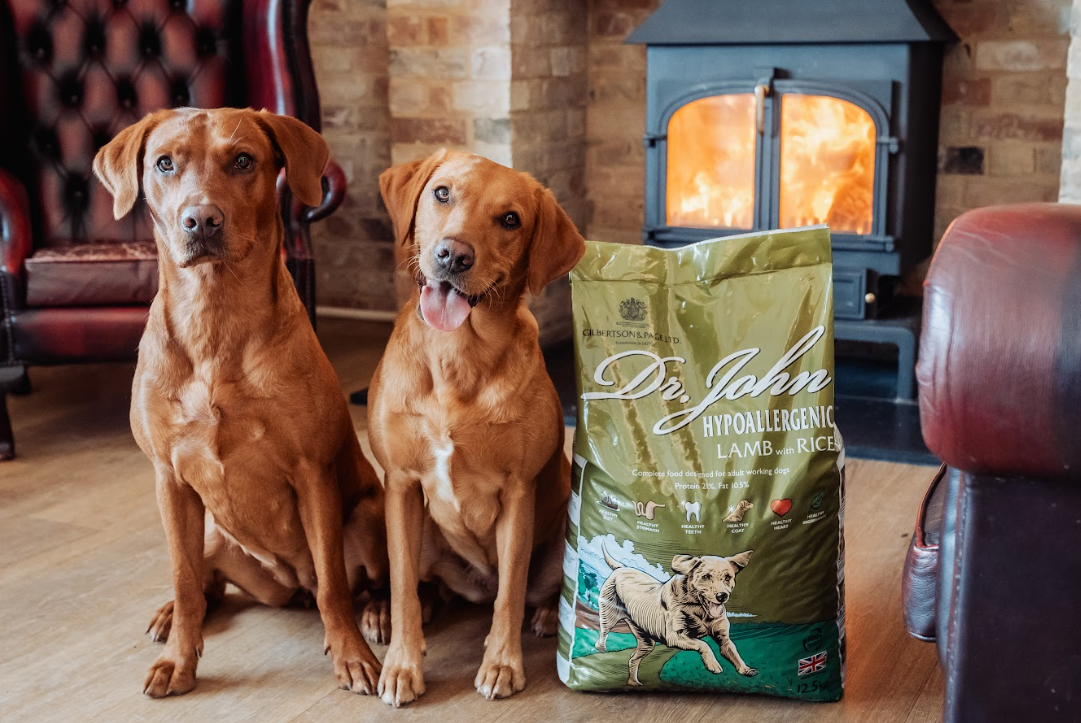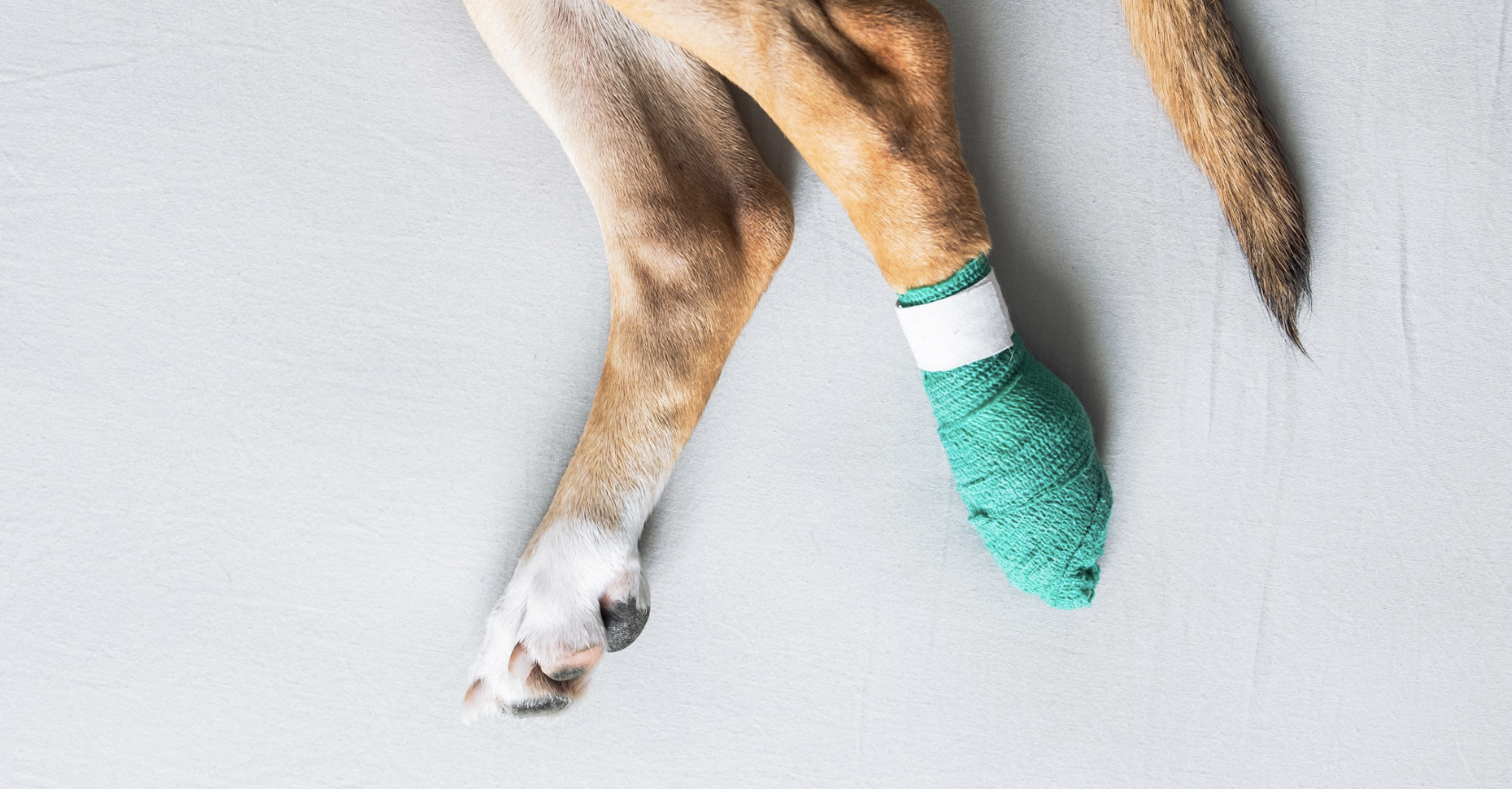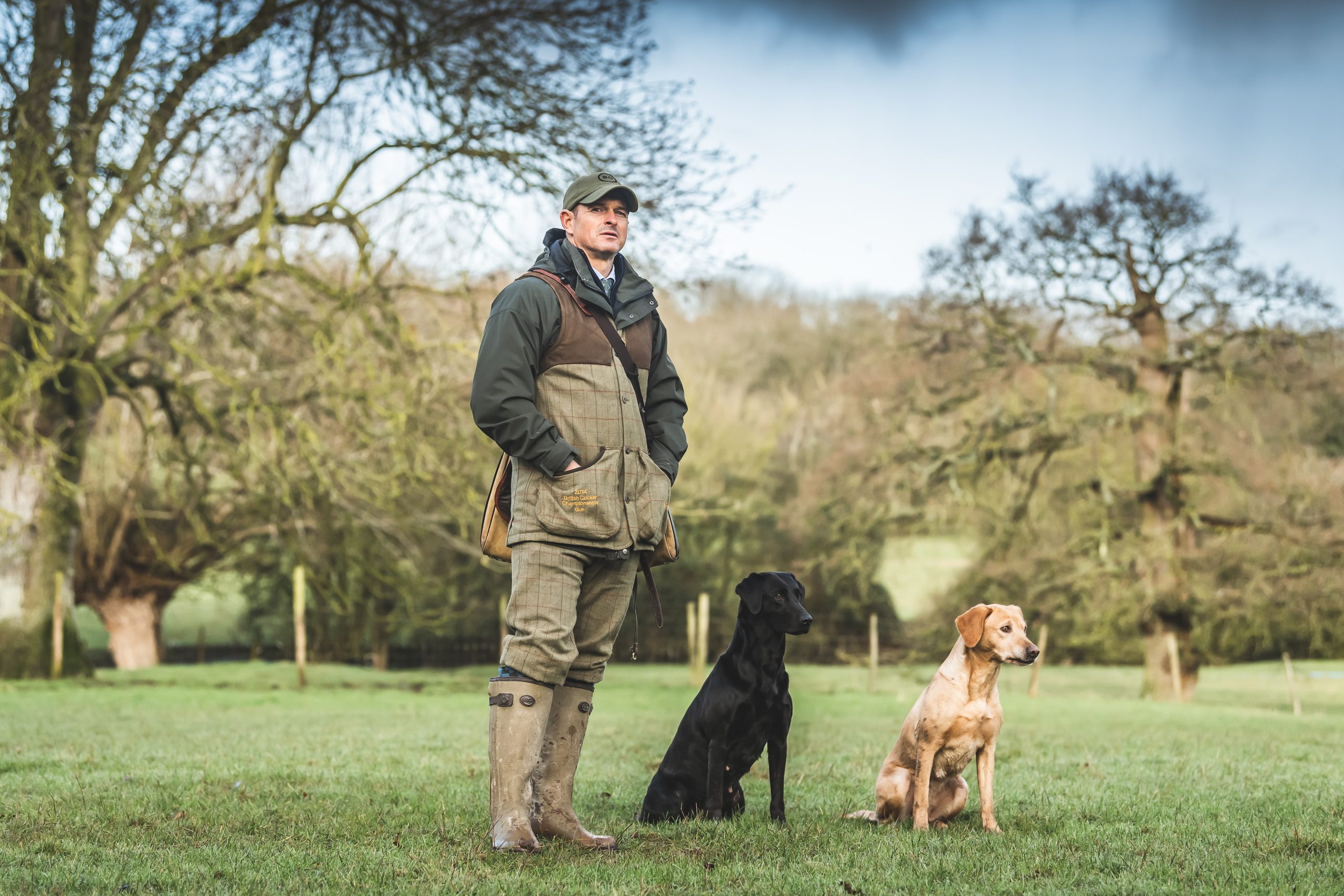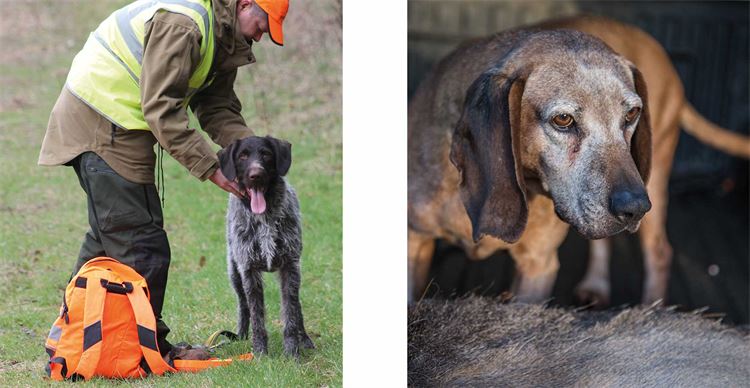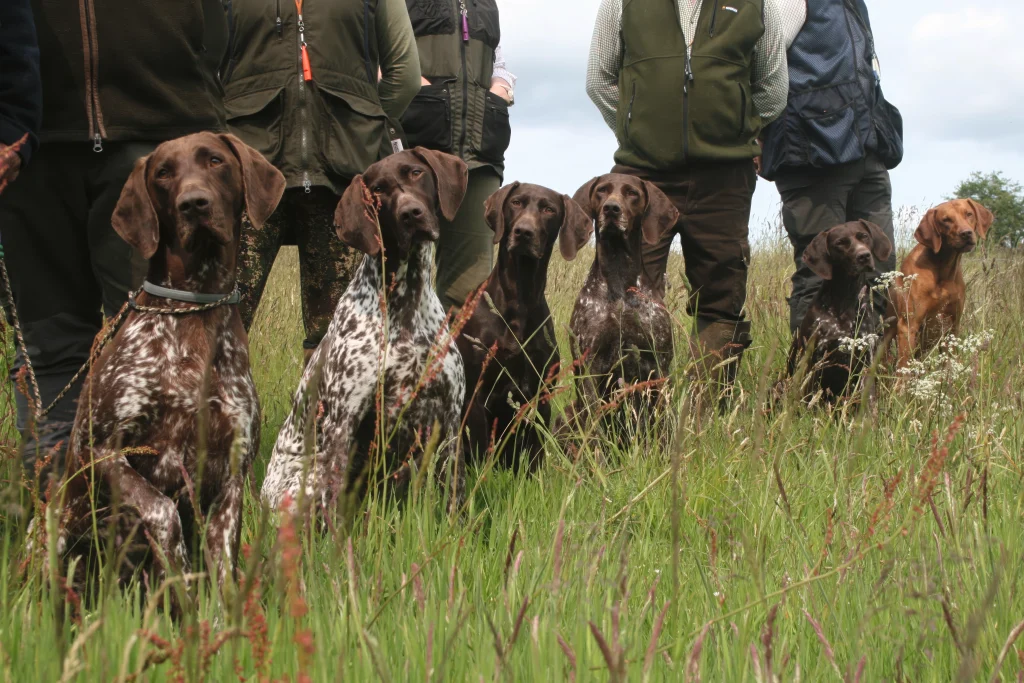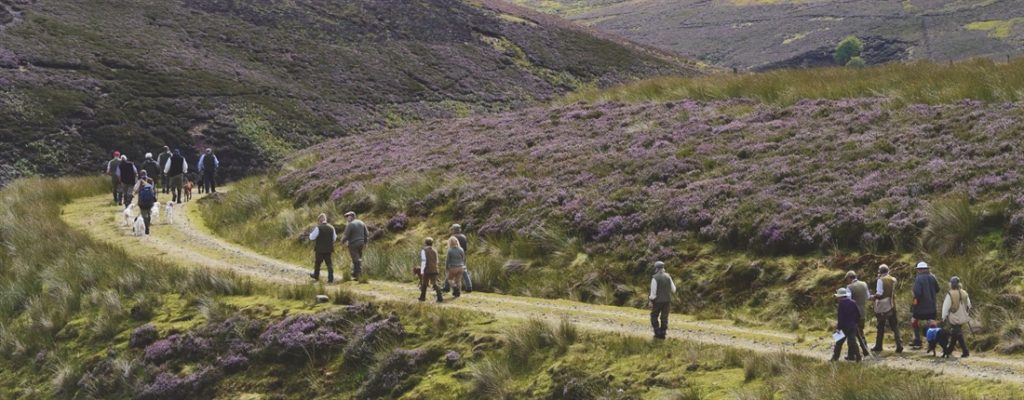Gundog training: dogs that track deer
How prepared are you for when things don’t quite go as planned in those final moments of a stalk? We discuss deer dogs, their training and the best procedure to enhance the chances of finding a lost animal with Tony Lowry from UK Deer Track and Recovery.
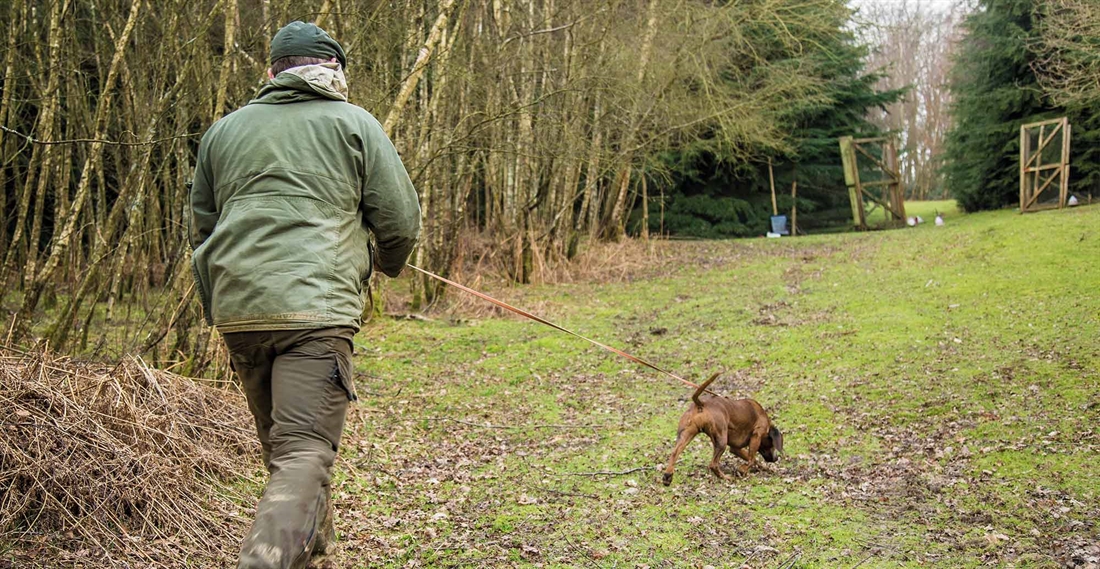
How prepared are you for when things don’t quite go as planned in those final moments of a stalk? We discuss deer dogs, their training and the best procedure to enhance the chances of finding a lost animal with Tony Lowry from UK Deer Track and Recovery.
When it comes to an ‘essential’ kit list for a stalking foray in the UK there are a few things that come to mind, beyond the rifle and appropriate clothing. You might also consider, depending on the nature of your stalking, a knife, binoculars, mobile phone, sticks, headtorch and wind checker.
What about a dog? A dog that is capable of tracking a deer for more than a few hundred metres? How prepared are you for when a stalk doesn’t go quite as planned?
In the vast majority of cases, the stalker gets within a sensible distance and places his or her bullet in the quarry’s vital organs, leading to rapid loss of consciousness and a dead deer. But it doesn’t go to plan every single time; misplaced shots happen. To everyone. And when they do, we owe it to our quarry to be prepared.
What Do Deer Stalking Dogs Do?
Dogs generally assume three roles as deer stalking companions in the UK:
- Walking quietly at the heel of the stalker and indicating the presence of deer ahead during the stalk
- Finding dead deer that have run into cover after a well-placed shot
- Tracking injured or wounded deer in the event of a mishap
It would be fair to say dogs with the former role are relatively uncommon, whilst the second-mentioned represent the majority of ‘deer dogs’. The focus of this article, however, is on the use of dogs in the latter scenario – when a deer has been wounded and the primary objective is to find it and prevent further suffering.
So, is it best to train your own stalking dog? And how easy is it? Tony Lowry is the chairman of UK Deer Track and Recovery (UKDTR), a non-profit-making group established in 2013 whose primary aim is to ensure stalkers in the UK have access to dogs that will track a wounded deer for many miles if required.
Teaching Gundogs To Stalk Injured Deer
“We do teach people to train their own dogs,” explains Tony. “But it requires a lot of time and patience to reach the level where a dog can track deer over long distances and across different terrain 12 hours or more after the shot was taken.
“Most people can train a dog to find a deer they shot 10 minutes ago that has run 100 metres before expiring; our focus is on animals that are still very mobile and quite capable of travelling a long way with their injury.”
For those who are serious about training such a dog, the key – as with gundog training – lies in gradual progression:
First Steps
Progression over time on short, simple trails – following a deer skin that has been dragged along the ground in a straight line – increase in distance and difficulty. Tracking dogs are kept on a long lead and as they progress with their training, a trail might incorporate broken trails, twists, distractions, and delays between the trail being set and the dog getting to work.
Adding Distance and Challenges
“Once the basics have been established and we know the dog has that natural ability to follow a trail, we can move on to using boots with deer hooves attached. Some people use small quantities of deer blood as they lay a trail, too,” explains Tony. “The dogs are smelling all sorts as they follow the trail, including broken vegetation and disturbed earth, and they should be encouraged to get their noses right down into the ground.”
Advancing The Danish Way
Interestingly, Tony and the team at UKDTR follow the lead of the Danish for their training techniques and competence tests. At the most advanced level, dogs are required to follow trails laid no less than 20 hours prior to the exam. “If you hit a deer in your car in Denmark, you have to call the police who will then employ a dedicated team of trackers to search for the animal from the roadside. They have an extensive network of people over there who work with tracking dogs, so we can learn a lot from them.”
Tony first witnessed such an impressive level of proficiency back in 2008 at a demonstration given by Kim Jorgensen in Devon. “He had a labrador and it followed the trail like a hoover, slowly and deliberately. It was amazing to watch,” he recounts. And so Tony’s passion for deer tracking with dogs was ignited.
What Breed Makes The Best Deer Stalking Dog?
“There are two questions we’re asked regularly at UKDTR,” Tony continues. “‘What breed makes the best deer dog?’ And ‘can I train my gundog to track deer?’
“The answer is, some breeds are naturally better suited to tracking, but it’s not breed-specific, and most dogs can do it; a member of our group has a lurcher that follows cold scent extremely well. Indeed, it’s as much about educating the handlers as it is the dogs.
“In the UK, I’d say roughly two-thirds of tracking dogs are labradors, but Bavarian and Hanoverian mountain hounds are growing in popularity. Whilst they are not generally as biddable as labradors, they have incredible noses.”
Tony is quick to point out that it is best if a dual-purpose working dog is taught to track deer before it is taught to hunt and retrieve game, rather than the other way round: “It’s difficult to train a dog to do both well, especially in this country where there are so many pheasant shoots and you’re quite likely to encounter a lot of gamebird scent whilst following a deer. That said, my other half has been taking our tracking labrador out picking-up this season and she has taken to it very well.”
Unsurprisingly, patience is paramount. It can take 2–3 years to train a deer dog properly, and gaining experience on the real thing is invaluable.
Signs, Procedure, And Best Practice in Deer Stalking With Gundogs
The UKDTR network is currently made up of 19 people, spread between Dorset and Inverness, who can be called out in the event of a lost animal. The majority of the team are experienced deer stalkers or managers themselves, many having the Deer Stalking Certificate Level 2 (DSC2) under their belt.
It is this understanding of how deer react and behave after being shot that is central to their success rate. “We probably find 75–80 per cent of the deer we’re called out to,” explains Tony. “But there’s a lot the stalker can do to improve the chances of an injured animal being recovered, too.”
Noting The Reaction To The Shot
Watching the animal’s reaction to the shot carefully and listening to the sound of the bullet strike upon impact can both be useful indicators of where the deer has been hit, if at all. After the shot, wait, watch and listen for any sign of movement, and make a mental note of the deer’s position when the shot was fired.
Following the shot, a wounded deer might run away as if not hit (typical of a flesh wound or graze), drop to the floor before picking itself up again and disappearing (typical of a broken leg), or hunch its back and move off slowly into cover (typical of a deer shot in the liver or stomach). Even if the shot is thought to have been missed, always investigate the strike site – a surprisingly high number of ‘missed’ deer are subsequently retrieved.
Marking The Position Of The Animal And Stalker
After 20–30 minutes, approach the ‘strike’ or ‘shot’ site, along the bullet path if possible, and begin looking for signs well before you approach the point where you recall the animal being stood – it is often closer (or further) than one thinks.
The strike site might be obvious, but it can also be very inconspicuous. The stalker should look for any trace of blood, bone splinter, hair, organ fragment or gut content which will help him or her build a picture of where the deer has been hit, how mobile it is still likely to be and hence the best way to recover it.
Investigating The Strike
Mark the strike site clearly but keep disturbance of the area to a minimum. It’s very tempting to try to track a wounded but mobile animal oneself or conduct an immediate random search of the area, but not only does this make it harder for a competent tracker and dog to pick up a trail; any injured animal is also more likely to be bumped on further with adrenaline still coursing through its body.
Leaving such animals to lie up and ‘stiffen up’ is widely accepted to be the better option – regardless of whether you decide to contact a tracking team or use your own dog.
Contacing An Experienced Tracking Team
When you contact a tracking team, be prepared to answer a number of questions the dog handler is likely to ask. These will include:
- Time of the shot
- Ppecies/sex of the injured animal
- Whether the strike site has been accurately marked
- Whether an intensive search for the animal has already been undertaken
- Whether you have permission to track deer on the land
- Whether you can obtain permission to track deer on neighbouring land
- Whether the handler will need to bring a rifle.
Decision Making in Deer Stalking
Ultimately, the decision on when and how to proceed with recovering a lost deer will be made by the tracker. Decisions will be influenced by the terrain you are in and the time of day. On the open hill, for example, it might be clear that the deer is not nearby and an earlier start might be made. However, if it is getting dark and an animal cannot be found, unless signs suggest the deer is dead, it is best to leave tracking until the next morning.
Typical situations where a delay in tracking is recommended include when an animal has been ‘gut shot’ (where a delay of a few hours is standard procedure), or sustained broken limbs or a broken jaw (where a delay of 12 hours or more would not be excessive).
“Perhaps the best general advice I can offer anyone dealing with a lost deer is never to assume but rather do your best to build a picture of the most likely scenario from careful observation, marking and investigation,” offers Tony. “We visit a good number of cases where it turns out the stalker has missed the deer altogether, and also those where the stalker suspected he had missed but found evidence at the shot site that suggests otherwise.”
To learn more about gundog handling and to keep up to date with the latest training, health, and field trials advice – sign up to our newsletter or subscribe to the Gundog Journal bi-monthly print issue.
Related Articles
Get the latest news delivered direct to your door
Subscribe to Gundog Journal
Unlock the full potential of your working dog with a subscription to Gundog Journal, the UK’s only dedicated magazine for gundog enthusiasts. Published bi-monthly, this authoritative resource delivers expert training advice, in-depth interviews with top trainers and veterinary guidance to help you nurture a stronger bond with your dog.
With stunning photography and thought-provoking content, Gundog Journal is your essential guide to understanding, training and celebrating your working dog.
Save 10% on shop price when you subscribe, with a choice of packages that work for you. Choose from Print & Digital or Digital only with each journal delivered directly to your door or via the app every other month, plus access to past issues with the digital back issue library.



